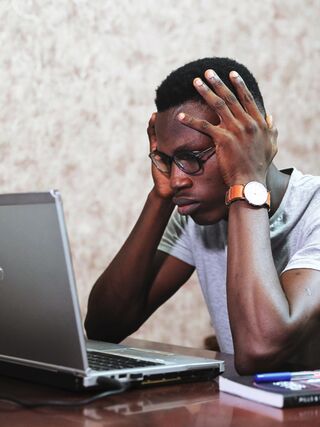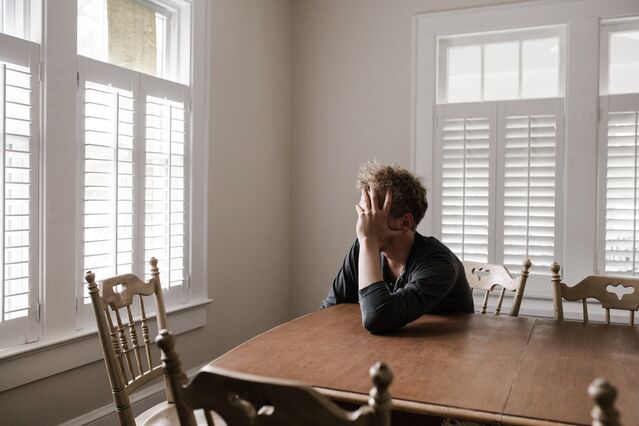Stress
It’s Time to Talk About the Privilege of Self-Care
Barriers preventing the well-being of the marginalized can no longer be ignored.
Posted June 22, 2021 Reviewed by Jessica Schrader
Key points
- Many barriers prevent marginalized populations from practicing self-care and building resiliency to stress.
- The stressors faced by blue-collar workers are often more numerous and severe than those of white-collar workers.
- Recognizing the hurdles faced by disadvantaged populations is the first step in preventing and addressing them.

Promoting “me-time” with pedicures and bubble baths has become widely popular. The first self-care publication was in 1946, and since then the topic has exploded. In 2015 alone there were 2,457 published articles on the topic. Use of the Instagram hashtag #selfcare is in the millions. Unfortunately, the advice to promote well-being is unrealistic for many people.
Just take a look at the suggestions mentioned in my previous post based on resilience research. While I advocated for finding areas we can control, and stand by that advice, what if the majority of stressors are outside of our influence? This is the reality for many in poverty who can’t simply take breaks from stressful jobs, change their diet and exercise routines, or depend on reliable social support networks.
Out-of-Control Stressors
Those with lower-wage jobs experience work-related stressors at higher rates than higher-wage jobs. Work stress can include workers’ perceived sense of control over their duties, the psychological demands of workload, safety concerns, work structure, and work atmosphere. Their schedules often include mandatory or voluntary overtime, which is correlated with sleep deprivation and fatigue.
Marginalized populations face much more than just work stress. Compared to other economic classes, those in poverty are more likely to face exposure to crime, drug-saturated neighborhoods, overcrowded residences, interpersonal relationships, and residential segregation to list a few. Eating healthy, getting quality sleep, and exercising may help marginalized populations bounce back from stress short-term, but these do not address the causes of stress. As one article stated:
Ongoing stress associated with poverty, or the stress of living with less than one needs, creates constant wear and tear on the body, dysregulating and damaging the body’s physiological stress response system and reducing cognitive and psychological resources for battling adversity and stress.
While taking a break to detach from a stressful job is a suggested way to be more resilient, it can be difficult to carry out for many workers. Evidence shows that taking a vacation can have long-lasting positive effects. One study found that taking vacation days improved work-life balance, decreased time pressure, and improved mental health. Unfortunately, low-wage workers are less likely to have paid sick leave, paid family leave, or paid vacation days. These breaks are missed opportunities to rejuvenate, and it shows in their subsequent performance. Preliminary research shows that four-day workweeks increase productivity and life satisfaction—a schedule that’s merely a pipe dream for most blue-collar workers.
Barriers to the Basics
It sounds simple enough to prioritize sleep, nutritious food, and exercise, but it’s not. Research has found that stress reduces slow-wave sleep, REM sleep, and increases awakenings. One of the symptoms of burnout itself is sleep disturbances, which in turn reduces the ability to handle stress.

Stress leads to higher rates of engaging in harmful coping mechanisms such as smoking and unhealthy eating, especially for those in blue-collar jobs. Nutrient-dense foods are often too expensive for those in low-wage jobs. The American Dietetic Association estimated that low-income families would need to dedicate a whopping 43-70% of their food budget to fruits and vegetables to meet dietary guidelines. Lower-income communities also have fewer grocery stores compared to higher-income neighborhoods. This results in residents turning more often to gas stations and convenience stores, decreasing the quality of their food intake. Losing out on vital nutrients can lead to worsening mood, and increase the risk of anxiety and depression. Let alone the repercussions on physical health.
Despite the resiliency effects of exercise, those from low-income households typically engage in less physical activity than those in high-income households. Reasons may include lack of transportation, fewer parks, health clubs, and sports centers, poor infrastructures such as unmaintained sidewalks and insufficient lighting, higher feelings of depression and sadness, and lack of funds supporting exercise to name a few.
Missing Social Support
Another important buffer against burnout and distress is social support—something economically disadvantaged people are less likely to have. Researchers found that those with low income and low education have an increased risk of being “structurally isolated and of receiving inappropriate support. They report lower numbers of close ties, have a higher risk of having no confidant and no partner, of not participating in any club, in other words of being socially isolated.”
Sociologists Massey and Denton posit that the physical deterioration of the environment influences the social behavior of its residents. For example, the occurrence of hazards such as abandoned houses can lead to visible deviance such as public drunkenness. In turn, residents withdraw and spend more time indoors, thus concentrating social interactions on close friends and family. Involvement in the larger community then decreases. Researchers suggest that this self-sustaining cycle lessens social control and leads to greater social disorganization.
In addition, social support is a weaker health buffer against stress in marginalized populations compared to privileged ones. Even though social support is more vital to marginalized populations, as they face greater exposure to stressors, their social networks are often composed of others who are resource-deprived.

Where We Go From Here
All of these obstacles to well-being are disheartening. Self-care and stress resilience tools can be a lifesaving way to cope, but many stressors can feel out of our control. So what do we do when we’ve tried to persevere through adversity, but can’t seem to build the resiliency we want to?
The first thing to do is give ourselves a break and practice self-compassion. If we aren’t coping with stress in healthy ways, let’s practice patience and kindness. Not everything will be in our control, so let us be generous in our evaluations of how we are handling things. Next, let’s be aware of the barriers that impact the well-being of the marginalized. Support companies that prioritize the health of their workers. Stay up-to-date on policies and legislation that work to promote mental and physical well-being for workers, especially those in low-wage jobs.
If we have seldom had to face these barriers, we can use our privilege to advocate on behalf of those who do.




